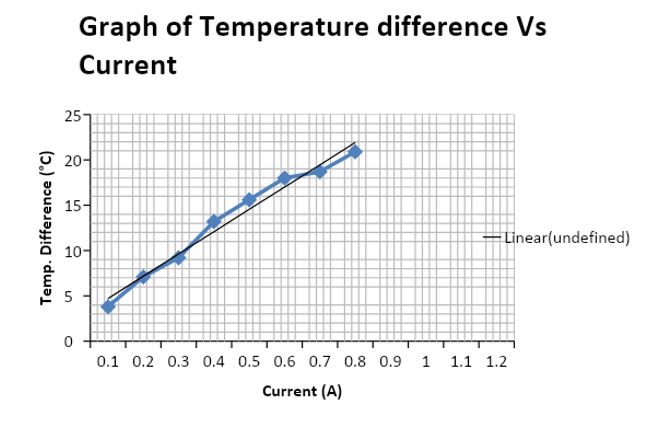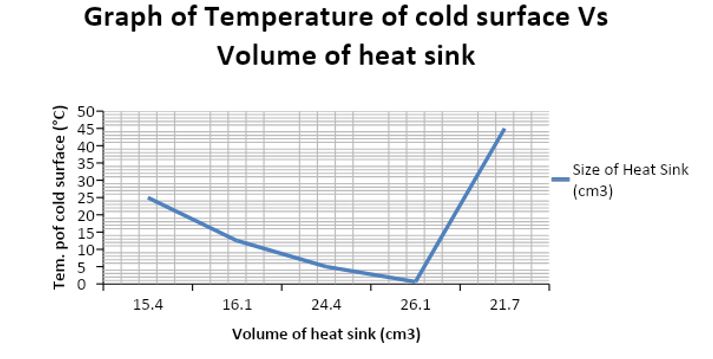Thermoelectric coolers abbreviated as TECs are cooling electrical systems the utilize temperature variation or gradient to generate a cooling effect using the Peltier effect. TECs are mainly made of a group of diverse semiconductor materials, which enable them to perform efficiently. A thermoelectric cooler is an assembly of diverse semi-conductor matters which facilitate their efficiency cooling drinks. We have two groups of semiconductor materials at the intersections, where one set takes in energy while the other set emits energy in the form of heat and by doing so, the temperature difference is formed. The heat is transferred from the cold side to the hot side by the use of an electric gradient. Therefore TEC is commonly used in cooling drinks.
Introduction
According to Anatychuk (1997, p.152), TEC’s are devices made from junctions of two semiconductors usually stacked on top of each other. They are solid-state energetic heat impelled which function by transmitting heat energy from the cold side of the device to the hot side (Vayner 1983, p.31). This is in opposition to the heat gradient and as a result, electric current is used. The electric current that is passed through the junctions makes one side of the junction absorb energy while the other sides dissipate energy in form of heat (Woodbury, Levinson, & Lewandowski 1995, p. 184). The main advantage offered by thermoelectric coolers is that they are highly reliable, are small, and light in weight, they have no moving parts that may require constant lubrication or attention, and their temperature control ranges have an error of ± 0.05 °C
Methods
Investigating the heat sink effect of current on temperature difference created by a TEC
The TEC ‘assemblage’ used entails a thermoelectric cooler joined to a tiny heat sink, without which the thermoelectric cooler would heat up ‘dangerously’ even with minute currents.
- Heat sink paste was used to attach copper heat sink on the TEC assembly and then temperatures of the hot surface of the heat sink and cold surface of the thermoelectric cooler were measured as a function of current, 0.0-1.0A.
- The thermocouple was enclosed in heat sink paste first prior to pressing them to the surface of the heat sink and thermoelectric cooler.
- Temperatures were then to reach steady values after the current was varied.
Results and analysis
Table 1.0: Effect of current on temperature difference created by a TEC

From the graph temperature disparity generated is directly proportional to the current that is passed through the heat sink, implying temperature difference increases with an increase in current. However, the limit that was used in this experiment was a current of 1.0 A so as to evade destroying the sensitive thermoelectric cooler assembly.
Therefore, extrapolating the line graph, it can be found that the temperature difference created by the current of 1.2 A is 33.7°C.
Effect of size of heat sink
In this testing, numerous dimensions of aluminum was used to examine the effect of the size of the heat sink on the temperature of the cold surface of the thermoelectric cooler assembly.
- The TEC assemblage was fastened to the variety of sizes of the aluminum, in turn, using the heat sink paste and currently kept constant at 1.0A.
- At room temperature, the temperature of the cold surface of the thermoelectric cooler assembly was then measured three minutes after the current had been switched on for all the sizes of the aluminum.
Results and analysis
Table 2.0: Effect of size of the heat sink on the temperature difference.

From the graph, we see the cold surface of the heat sink is much lower when the size in terms of volume, of the heat sink, is greater. It can be concluded that the temperature of the cold surface of the heat sink is inversely proportional to the size (volume) of the heat sink up to a certain value when the temperature increases with an increase in the volume of the heat sink.
System design using thermoelectric coolers
- The testing was carried out by first using a small mass of water in the small copper container (Ccu =386 J kg-1 K-1).
- The temperature change of the water was measured after 4 minutes. This was also done for the thermoelectric cooler assembly.
- This procedure was repeated for different conditions including a bigger heat sink, the heat sink in ice, a smaller heat sink among others.
- The conditions that gave the best results for cooling the water for 30 minutes were selected and the temperature of the water Tw and the temperature of the thermoelectric cooler assembly Ttec was recorded after every 5 minutes.
Results and analysis
Table 3.0: Effect of different types of heat sink materials on the cooling effect of water.
Mw= Mass of water
Mc= Mass of colorimeter
dQ/dt= (MwCw+ McCc) dT/dt
dt= Tf- Ti (total time in seconds)
Table 4.0 Temperature difference created by one heat sink over time.
Volume of Aluminum= 40X 40 X4
Density of Aluminum= 2710 kgm-3
=6400mm3
=6400 X 10-9 m3
Mass= Density X Volume
= 2710X 6400X 10-9
Rate of energy removal= 5J/s
dQ/dt= m* C* ΔT/Δt
Δt= 60s, ΔT=Tf- Ti, C= 900J/ Kg/ °C
-5= dQ= (2710 *6900* 10-9 *900 ΔT)/ 60
Tf=24.7°C
Discussion and Conclusion
Various aspects control the functioning effectiveness of the thermoelectric coolers. For instance, the quantity of current that passes through the thermoelectric cooler will determine the amount of heat energy difference created. The higher the current that flows through the TEC, the higher the temperature difference created. The size of the heat sink will also affect the temperature difference of the TEC. The bigger the size of the heat sink, the smaller the temperature difference created. Due to the temperature gradient generated, the device is able to keep drinks chilled.
List of References
Anatychuk, L 1979, Thermoelements, and thermoelectrically devices, Prentice-Hall, New York.
Vayner, 1993, Thermoelectric coolers, Prentice-Hall, New York.
Woodbury, H, Levinson, L & Lewandowski, R 1995, Z-meters CRC handbook of thermoelectric, CRC Press, Inc., New York.